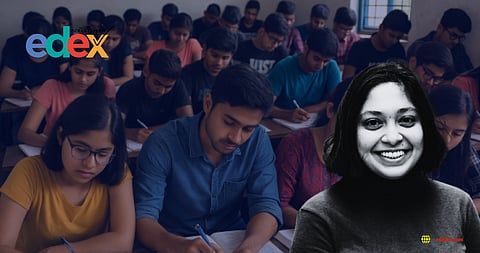

Education in India is supposed to be free, but for most students comes with a hidden price tag: private supplementary tutoring. In January 2024, the Government of India issued Guidelines to Regulate Coaching Centres, which prohibit enrollment in coaching until senior secondary school.
At first glance, this seems like a step to protect children’s rights, but does banning coaching truly help students?
The promise of free education
Globally, education is recognised as a human right. International conventions like the UDHR and ICESCR guarantee free and compulsory primary education, while calling for secondary education to be progressively made free.
India reflects these commitments through the Right to Education Act, which makes education a fundamental right for all children aged 6–14. Delhi goes further by covering senior secondary education too. However, over the years, there has been a rise in the coaching industry, especially at the secondary level, where students sit for the high-stakes board examinations.
The industry in India is valued at over USD 15 billion, growing at nearly 25% each year. Families spend heavily on tuitions, despite “free schooling”. Further, access to coaching depends on financial/ social status, making it a driver of inequality.
The proposed ban on coaching centres
The 2024 Guidelines allow only senior secondary students to enroll in a coaching centre. Any centre teaching more than 50 students is classified as a coaching centre. Hence, group coaching has effectively been banned until the completion of secondary school. One-on-one tutoring is not subject to a ban.
While the ban aims to protect the students, it risks depriving them of academic support, especially those who rely on the more affordable group tuitions.
Student voices: Why tutoring feels essential
Interviews with Delhi government school students reveal just how important tutoring is for them: “schoolteachers are not teaching well…they give a lecture…they are not putting any effort to teach us…we need younger teachers…this is why we need coaching class.” Students also believe that tutors are more motivated to teach because “government teachers are permanent… it makes no difference to them if a child is getting good marks or not.”
Additionally, they expressed that coaching helped increase their confidence, stay focused, overcome laziness and fill knowledge gaps by giving avenues for practice and doubt solving. Even students with good schoolteachers felt compelled to take tuitions in Class 10 to perform well in the exams because they would give access to practice papers, exam-focused notes and targeted preparation.
The pressure of board exams, combined with the knowledge that peers are attending, reinforces tuition as a necessity, and students shared that they would continue with them, even if banned.
The dark side of coaching
The unregulated coaching market exposes students to serious risks. Tuition teachers may lack the requisite qualifications and pedagogical training. Secondary students reported being taught by tutors with only primary training or juggling unrelated jobs like running pastry shops and selling clothes online. They also shared instances of tutors neglecting classes, using insults or leaving mid-lesson to film social media content.
Families were pressured to keep paying, sometimes beyond their means: “We tried to quit, but she did not let us leave. She told my father I will get left behind… all the others will get ahead in life… just because he is not able to pay the fee.” Hence, even though tutoring is desired, the lack of regulation makes it risky.
The policy dilemma: Ban vs regulation
A ban is unlikely to succeed because of students’ overwhelming support and desire for tutoring. Additionally, a ban would deepen inequalities. Wealthy families will still afford one-on-one tutors, while poorer students — who rely on cheaper group classes — will be left behind.
International evidence also shows bans don’t work. South Korea, China, and Myanmar attempted to curb tutoring through restrictions, only to see the market go underground. In India, too, the entrenched social legitimacy of tutoring indicates that it would continue in secret.
Regulation, not a ban, is the way forward. While some provisions in the Guidelines, such as limits on class sizes and minimum qualification requirements for teachers, represent progress, more comprehensive reforms are needed. At the same time, systemic reform is required to address the root cause of demand.
Despite schools being free, education in India comes with significant hidden costs. The proposed ban will not solve the problem because it risks worsening inequalities and denying students the support they feel they need.
Instead, India must invest in better public schools and regulate the coaching market. Only then can the country move closer towards making free education a reality.
[Article by Pritika Malhotra is a Teach For India Fellow. Views expressed are their own.]
